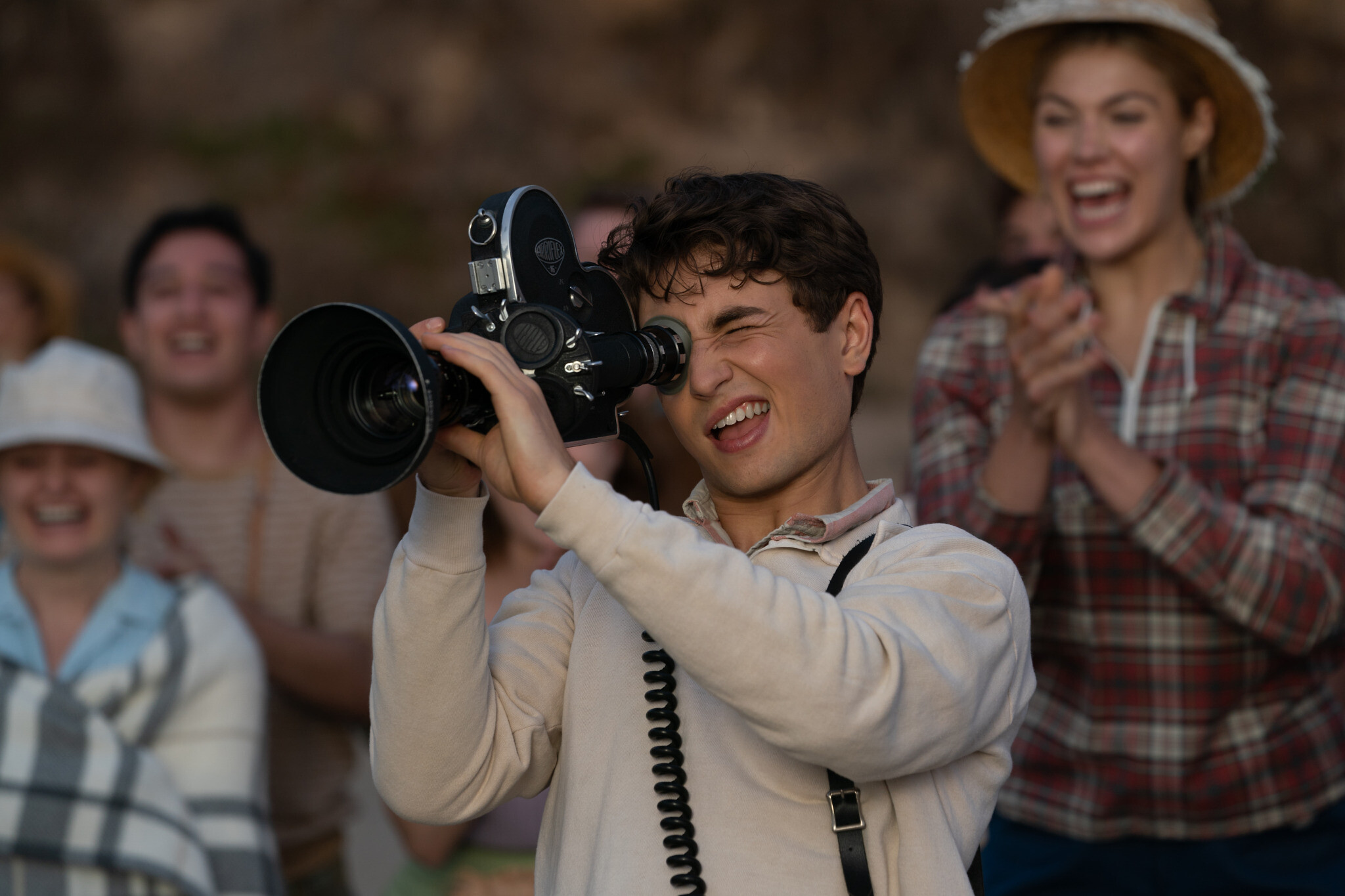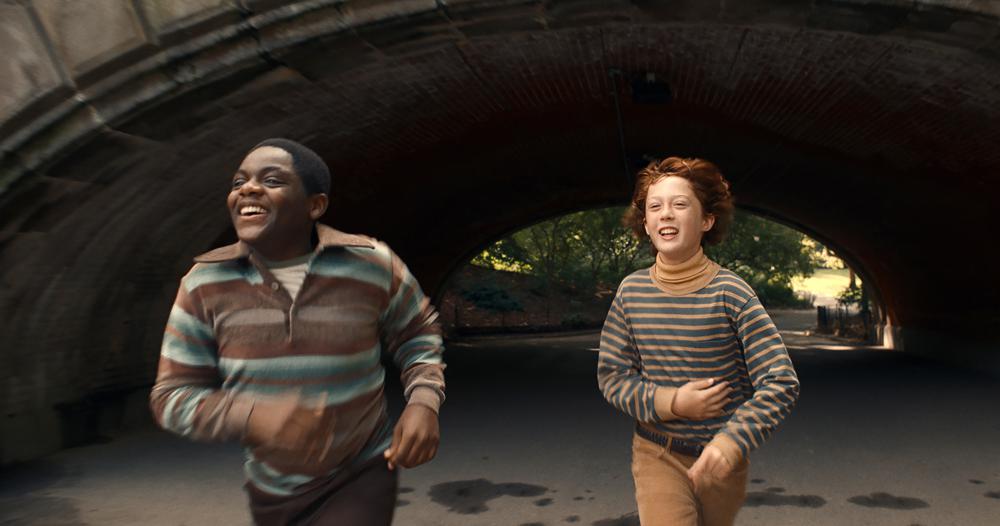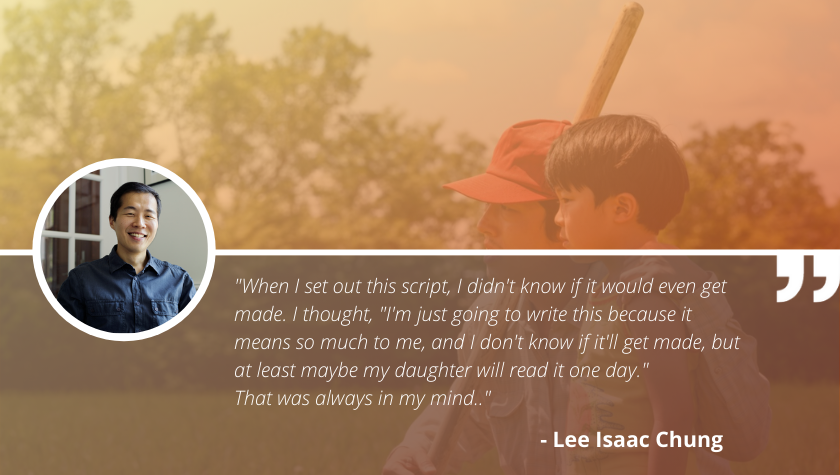5 Screenwriting Takeaways From 'Minari'
March 5, 2021
We’ve all heard the story before: a Korean-American family moves to Arkansas because the patriarch wants to be a farmer. Okay, maybe we haven’t heard that specific story before but we all know the story of families struggling through hard times and growing apart before they come together.
What makes Minari special is its semi-autobiographical roots. Writer-director Lee Isaac Chung built the story of memories from his childhood and turned it into a unique narrative following a family of four in the 1980s as they move from California to Arkansas and experience the challenges of tornadoes, financial problems, living in a small trailer together, joining the community, and much more.
Here are five screenwriting takeaways from the 1980s-based Golden Globe® winner for Best Picture — Foreign Language, Minari:
Tell a true-ish storySemi-autobiographical is the name of the game here. Chung has stated, “Minari is not a factual representation of my childhood... but there are resonances there, the personal significance is deep.”
What’s true is that Chung moved to Arkansas with his family in the 1980s, but from there it becomes less of a true story. Chung approached the story by writing memories from his childhood. Once he came up with about 80 of them, he put them into a narrative and built the story of Minari.
A screenwriter can learn a few things from this approach. For instance, not every true story is big. Most of the time we think of "based on a true story" as a significant event, but there are plenty of smaller stories to tell that pack a major emotional punch.
Also, writers often pull experiences from their past as inspiration for their story. Chung had written down 80 specific and significant memories he could use. What memories do you have that could be a scene in your screenplay?
Fish out of water
From the first scene, we know that this family is like a fish out of water. The father bought the land for his farm and brought his family from the cities of California to the rural small towns of Arkansas. Even though there is a small Korean community here, the family faces challenges as outsiders living in a world of unfamiliarity.
The term "fish out of water" often feels like comedy, but it’s a great way for any screenwriter to build a story that may be unfamiliar to the audience and show it through their eyes. We watch the Yi family experience the threat of a tornado, working the land, employment as chicken sexers and building a lifestyle far outside their comfort zone.
This isn’t just out of their comfort zone, but ours too.
Bring two worlds togetherMinari brings a lot of worlds together and shows conflict as they collide, the obvious one being the Korean lifestyle with the Southern American lifestyle. It’s important to realize that the Yi family was familiar with America; they had been living in California for years. But there are traditions that the son and daughter, David and Anne, find conflicting as they are children growing up in America. They speak more English in the film than their Korean parents, David often rejects the cultural cuisines his family cooks and while racism isn’t overt in the film or even hostile, hints of it pop up in subtle dialogue.
Several levels of religiosity are seen throughout the film as well. One, for instance, involves someone who helps the Yi family on the farm; this character spends his Sabbath day carrying a large cross down the road (a memory Chung took from his childhood) while Jacob, the Yi family patriarch, finds less meaning in the religion.
Finally, the mother of Monica, the Yi family matriarch, arrives at the trailer from Korea to help out while both parents work. Her complete unfamiliarity with America brings conflict to the family as she pushes some of the culture onto the children as well as levity to the movie as she experiences some American staples (i.e., professional wrestling and Mountain Dew) for the first time.
Finding identityWho is David? He’s a young boy with a heart defect. He has to share his room with his grandma. He’s watching his parents fight while living on land his father intends to turn into a farm. And, he’s surrounded by both Korean and American culture.
Who is Jacob? He’s a dreamer who desires to own land that he can farm. He’s an American entrepreneur who puts his family through hellish situations for something he believes in.
Both these characters are very different but both struggle with their identity. In fact, most of those in the movie are trying to figure out who they are in a world of unfamiliarity.
Personal or internal conflict is huge for storytelling. Screenwriters can see how deep identity issues can be and how critical it is for a film’s emotional success. Whether it’s a character arc, hero’s journey or the need to make a supporting character three dimensional, it’s important to define the identity of the character, the conflicts it brings to the character, and how it changes throughout the story.
Enemies and friendsIt’s a concept as old as storytelling: two people at odds against each other only to end up becoming good friends. While this drives movies of all genres from Lethal Weapon to Shrek, it doesn’t necessarily have to be the main focus of the characters in the film.
In Minari, David and his grandmother are fast enemies. She is sassy, unfamiliar and, to the chagrin of David, doesn’t “act” like a grandma (i.e., someone who knows how to cook, is nice, etc.) On top of that, she becomes a burden in his life. She sleeps on the floor in his room and even starts drinking his favorite beverage.
They are forced onto each other.
Eventually, they find their way to becoming friends. Again, this isn’t new, but it is more of a subplot. The enemies-becoming-friends aspect isn’t driving the story like it does in countless cop movies or even Hallmark Christmas movies.
For the screenwriter, they can use this tactic as part of a smaller part of the story but one that can provide a strong emotional impact.
Minari is currently in theaters and available for streaming.
Written by: Steven Hartman
Steven Hartman is an award-winning, optioned screenwriter. He was a Top 5 Finalist in Big Break’s Historical Category in 2019 and won Best Action/Adventure in Script Summit’s Screenplay Competition in 2021. He holds a Bachelor of Arts degree from Columbia College and had internships at Jerry Bruckheimer Films and Village Roadshow Pictures. Steve is a full-time writer and creative video producer by day and a screenwriter and novelist by night.- Topics:
- Discussing TV & Film




